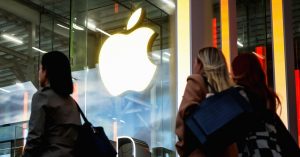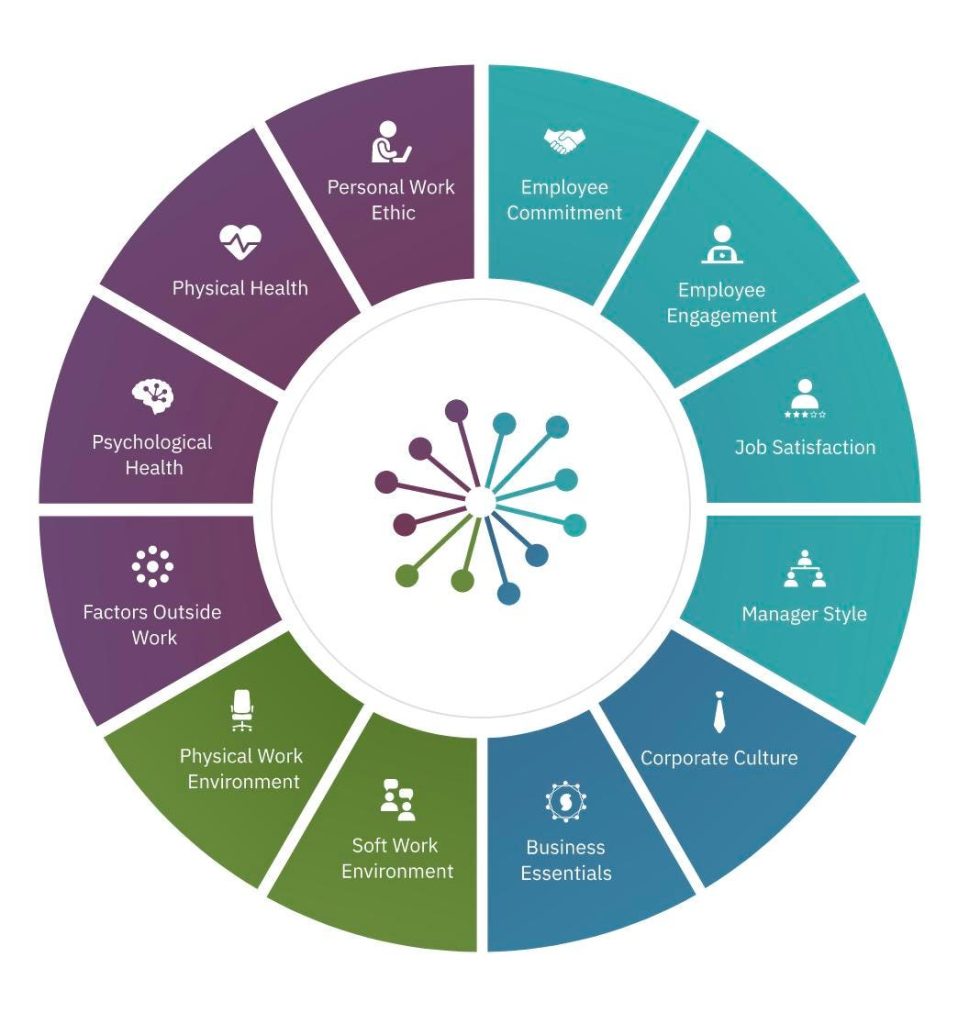In 2022, companies worldwide spent an estimated $791M conducting employee engagement surveys. That amount is expected to be $911M by the end of 2023 and top $2,753M by 2030.
What is driving this exponential increase?
Employee engagement correlates with performance, and employee performance predicts company performance. In today’s post-COVID workplace, companies around the world are scrambling to engage an increasingly diverse workplace; all while improving efficiencies, pumping up productivity, reducing turnover and increasing revenues.
Gordon Watson, Chairman of AXA Asia, understands employee health and wellness perspectives and how they connect to productivity. Watson is also Chair of the Mental Health at Work IndexTM at One Mind at Work and has long been a mental health awareness champion.
“A lot of organizational productivity relies on employee mental health,” Watson said in an interview. “I just completed my master’s degree in global mental health, and my dissertation was on what CEOs really feel about employee mental health.”
Gordon explained that leaders focused on employee mental health understand the positive correlation between increased productivity and positive mental health. He adds that most of the productivity loss from mental health issues stem not from absenteeism but rather from presenteeism; employees show up to work but are not really there.
The New Employee Measurement Company
Companies regularly resort to surveys, significantly draining internal human resources groups–from DEI and employee culture, to health and wellness and workplace analytics. Moreover, it often take as much as six months to plan, communicate, execute, analyze and report results. Even then, results only go to top leaders who decide what, if any, results are addressed at the team level.
Between the resource drain and the fact that employees often do not believe that anonymity is guaranteed, it is more practical to turn to a third party to measure, analyze and report on employee engagement and productivity. While countless businesses provide B2B support, Gordon recently joined SHAPE Global, an employee experience measurement company, as an Advisory Board Member. Watson’s consistent advocacy for mental health awareness aligns with SHAPE’s commitment to employees’ psychological health.
Founded by Ali Khan and Dr. John Lang, SHAPE stands for the System for Health Attendance Productivity and Engagement. After three years of intensive research leveraging the science of analytics and AI, Khan and Lang unveiled a scientific link between employee actions, productivity and business metrics, advancing how companies can measure and evaluate employees health, engagement and performance.
“Having dedicated many years to the wellness industry, I realized that organizations were overlooking key factors impacting productivity, ones that go beyond physical and mental health,” said Lang, SHAPE’S chief scientific officer.
“This realization sparked the creation of SHAPE, an evidence-based platform designed to shed light on the many unseen dimensions of human productivity in the workplace. Our careful, considered approach builds an experience-driven and holistic understanding for achieving optimal, healthy, engaged employee performance.”
Advanced scientific research and AI
Nicola Thompson is an experienced Senior Executive and Board Advisor with over 25 years of experience gained largely within digitally native, global consumer retail brands. As the former CEO of Made.com, Thompson knows very well the daily challenges leaders face when balancing the needs of the business and the people that drive it.
Part of the problem, Thompson explained, is that employee culture can take time for leaders to get their heads around.
“I think very few organizations try to codify it and make it live and breathe in the organization,” Thompson said. “It’s as if the talk doesn’t exist for how to do that.”
Thompson is another business leader on the SHAPE bandwagon. Like Watson, she has joined the startup as an advisory board member.
“What excites me most about SHAPE is how they partner with leaders to create change,” Thompson said. “And the SHAPE tool does what other employee measurement companies don’t do–give direct, individualized, real-time feedback to every employee who takes the 25-minute survey.”
Another factor that makes SHAPE results unique–and especially powerful for organizations–is the technical innovation to ensure anonymity without disaggregating the data, as with other surveys. GDPR compliance, ISO recognised and a registration with the Information Commissioner’s office assure employees that their data is safe.
The results offer centralized data to cross-correlate and provide leaders with a longitudinal view and trending. With this level of detail, leaders glean keen insights to interpret and respond to the present needs of their employees, but also foresight to predict and prepare for the future. And that’s a game-changer.
Participants receive a report reflecting their personal sense of flourishing in 12 identified categories. The report is provided after the employee hits submit and includes individual, actionable insights from more than 100 factors affecting employee experience and productivity.
While most survey results go directly to leaders, the SHAPE tool provides reports from grassroots to the boardroom, with essential data to create a flourishing workplace driving loyalty, productivity, and business outcomes. The results provide a comprehensive understanding of the workforce, painting a picture of the present state while offering employees rich feedback and leadership advanced predictive insights for future planning.
Leaders no longer have to wait months while the numbers are crunched; SHAPE provides a full report to leaders and managers after the 30-day participation period. At every level, the reports include summaries and actionable insights–individuals, teams and leadership. These detailed breakdowns are a strategic link between high-level boardroom decisions and ground-level implementation.
Driving Business Outcomes
Ken Hoskin is a global HR leader with significant experience and exposure to some of the best-known measurement companies. Formerly with Airbnb and Meta, Hoskin is the vice president and head of APAC HR at Adyen. To Hoskin’s knowledge, no other company can do what SHAPE does.
“SHAPE is pioneering the future of HR with analysis, simplified insights and recommendations. The science behind it allows leaders to set people strategies confidently, but they first have to understand it. That’s part of the responsibility of the advisory board, to help other leaders see the full power of the tool and how it can positively impact employee and business success.”
Watson, Thompson and Hoskin are not the only global leaders who see the potential for SHAPE to reshape the employee measurement landscape. They are joined by Craig Moss, executive vice president of measurement at Ethisphere, and Doug Hudson, managing partner and founding member of Braxton Capital.
“What really sets SHAPE apart is its appeal to CEOs, its goal to boost productivity in real-time and ROI by aiding employees and organizations to unlock potential and achieve transformative results,” said Hudson. “I see an exceptional opportunity for SHAPE in a market hungry for such a growth catalyst.”
The Post-COVID Workplace Reality
SHAPE founder Khan has a message for business leaders: What got you here won’t get you there.
“COVID has laid open and bore out so many things. Most significantly, it has changed attitudes,” Khan said. “Business is about human beings; you cannot succeed without engaging them. You can’t engage them without first understanding them. You can’t do that without measuring where they are. You can’t do that without getting the right tool. And you can’t do that without the right science.”
The layering is complex, but leaders focused on building a robust, longer-term business understand this and are actively seeking solutions.
“While traditional yardsticks for measuring workplace success are not to be dismissed, they are wholly insufficient for the modern challenges we face,” Khan added. “The power of the employee voice has grown significantly, shaping a more nuanced and holistic view beyond simple KPIs. This focus on individual experience is the new cornerstone for a work environment.”
“The scientific and quantified nature of it allows a better set of conversations to happen at the exact table right at the top,” Thompson said. “That drives investment in a far more focused way and makes executive teams feel like they are making a better and more defendable set of decisions–not only for their employees but for the business.”
No matter how small or large, every organization is searching for answers to many of the same questions. An obvious post-COVID challenge is the debate over remote and hybrid working as employers try to lure employees back to the office.
“You see this even in organizations like Meta, Apple and JP Morgan,” Thompson said. “Everyone is struggling with a question that is too big at the moment–should we allow people to continue hybrid working?”
Thompson argues that leaders are asking the wrong question.
“The questions should be, in which parts of my organization are teams thriving through remote working, and in which parts of my organization are they not? And how do I help set up my organization so everybody can thrive through different approaches in different areas of the business?”
Thompson’s explanation is that the human mind tends to default to binary answers when faced with complex questions.
“For example, leaders say they don’t like hybrid working, and they’ve decided it’s not productive. As CEOs, they put the stake in the ground and say everybody has to be in the office at least three days a week.
“Why is that the answer? Thompson asked.
“With SHAPE, it doesn’t have to be. Their analytics can show where hybrid and remote arrangements are successful, and where they are not.
“That’s the power of the tool.”
Read the full article here










